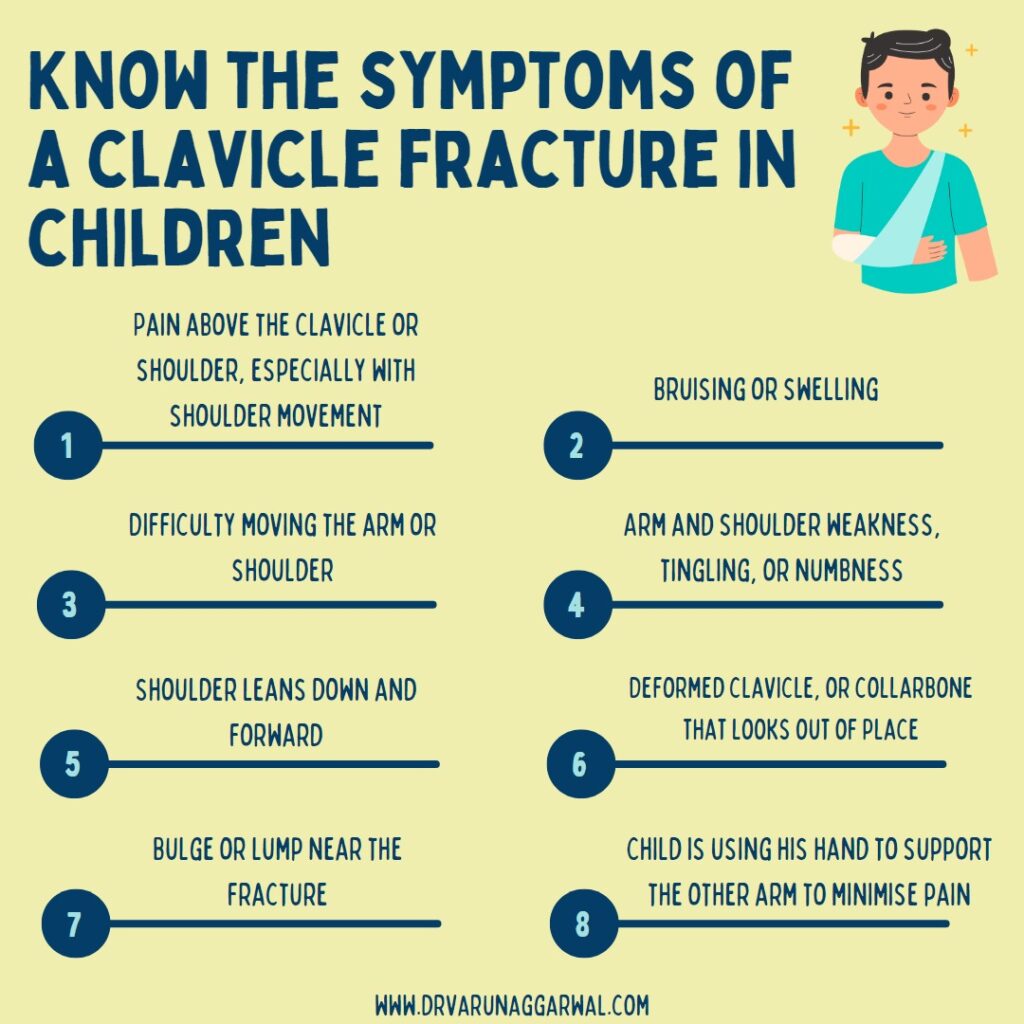Clavicle or collarbone fractures are very common among children. Typically, clavicle fractures in young children do not require surgery because of the potential for healing and remodelling (or reshaping). Your children may require surgery in the case of an open fracture, where the bone protrudes through the skin, and/or injury to the nerves and blood vessels surrounding the clavicle, or the fracture is displaced significantly. However, surgery is rarely needed as in most cases even a large amount of fracture displacement heals without surgery.
Know the symptoms of a clavicle fracture in children
- Pain above the clavicle or shoulder, especially with shoulder movement
- Bruising or swelling
- Difficulty moving the arm or shoulder
- Arm and shoulder weakness, tingling, or numbness
- Shoulder leans down and forward
- Deformed clavicle, or collarbone that looks out of place
- Bulge or lump near the fracture
- Child is using his hand to support the other arm to minimise pain.
Diagnosis of a clavicle fracture
If your child has undergone an injury or is experiencing symptoms, you need to tell your healthcare provider. The doctor will examine your child’s shoulder and may lightly touch the collarbone. The doctor may also examine your child’s arm, hand, and fingers for checking the strength and sensation. The fracture may be seen on an x-ray or CT. To make the fracture more visible in the pictures, your child can be given a contrast liquid.
How is a clavicle fracture treated in children?
Most broken clavicles heal naturally by themselves. However, it is essential to consult an Orthopaedic specialist like Dr Varun Aggarwal, a well-known Orthopedist in Chandigarh, for a proper treatment plan. Remember to keep your child’s arm still for the correct healing. Your child may need any of the following:
Acetaminophen reduces temperature(Fever) and pain. It is available without a prescription. Ask your doctor about the dosage. Check the labels of all medicines your child takes to see if they contain acetaminophen, or ask his or her doctor or pharmacist.
NSAIDs like Ibuprofen help reduce fever, swelling, and pain. You can get this medication with or without a doctor’s prescription. Some people may get stomach bleeding or kidney issues by using NSAIDs. Therefore, always inquire as to whether NSAIDs are safe for your child if they are taking blood thinner medication. Read the medication’s label carefully, then follow the directions. Without the guidance of a healthcare professional, do not give these medications to children under the age of six months.
A sling or brace may be necessary to use in order to keep your child’s clavicle from moving while it heals. Additionally, it will lessen pain.
Surgical intervention may be required to reposition the bones. To hold the bone together, screws, plates, and pins may be used.
What can you do to manage the clavicle fracture in your child?

- Rest is extremely important for the healing of clavicle fracture of your child. Your child needs to rest as much as they can and sleep a lot.
- Apply ice to your child’s clavicle for 10 to 20 minutes every hour or as directed by your doctor. Ice reduces pain and swelling. Use an ice pack or a plastic bag filled with crushed ice. Before applying the bag to the clavicle, cover it with a cloth.
- It may be necessary for your child to undergo physical therapy after healing of his/her clavicle. Exercises are taught by a physical therapist to increase strength and movement in your child, and decrease pain.
Click here to contact for more information


